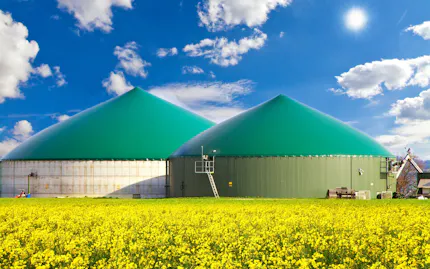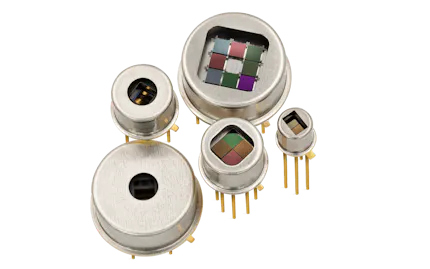Accelerated Remediation of Contaminated Sites
Remediating sites contaminated with pollutants takes a long time. The Canadian company LiORA offers measurement devices that can help to reduce the remediation time from 20 years to two. This is accomplished by combining the latest detector technology from InfraTec with AI-controlled analysis. LiORA is revolutionizing the way companies can monitor and manage contaminated sites. Remediation projects can be completed faster, budget costs are reduced, and soil quality is improved worldwide.

LiORA's (formerly Environmental Material Science) measurement devices are used for a variety of demanding tasks in environmental technology. These include monitoring soil and water quality or assessing air pollution. The required measurement devices must work reliably under a wide range of conditions, for example when measuring volatile organic compounds (VOCs) leaking from an underground storage tank, assessing groundwater contamination or tracking emissions from a natural gas pipeline. The LRM-284 pyroelectric detector from InfraTec's PYROMID® family used by LiORA provides the stability and sensitivity required for accurate long-term monitoring in all environments, without the need for recalibration.

The LiORA devices used for soil testing are integrated into robust, fully recyclable aluminum tubes that can be easily inserted into the ground using a hand drill.
These measuring devices serve as stand-alone monitoring system but can also be integrated into complex digital soil monitoring solutions. Solar cells supply power that allows independent operation for up to one year.
LiORA's software uses artificial intelligence (AI) to track, predict and quantify the risk of current conditions at a site. The AI automatically develops detailed models of the site, helping to save travel time, personnel or costly analysis.
These measurement devices are used with the LRM-284 detector for non-dispersive concentration measurement of critical indicators of environmental health, including:
Carbon dioxide (CO
2 )Methane (CH
4 )Volatile organic compounds (VOCs) from C2 to C10 hydrocarbons
This method enables the collection of 17,000 measurement endpoints per year, compared to conventional methods that often rely on a single sample estimate. These high-resolution data are the basis for LiORA's AI-powered forecasts, which enable faster and better-informed decisions to be made. Users benefit from a deeper understanding of the subsurface environment due to real-time insights, enabling them to accelerate site closure.
Reliable in Challenging Environments
Measurements at depths of more than 30 meters below ground are part of everyday operations. This environ-ment is characterized by high pressures, humidity and fluctuating temperatures. At contaminated sites, aggressive solvents and hydrocarbons are also present very often.
The rugged design of the LRM-284 ensures consistent sensitivity even under these extremely demanding conditions. The detector provides the data needed to make informed decisions about remediation strategies and as a basis for long-term site management. The data can also be used to demonstrate compliance and track the progress of remediation efforts.


Remarkably Low Energy Consumption
Many sites that need to be monitored are in remote locations, where reliable power sources are rarely available. This is where the space-saving, quad channel LRM-284 detector, with its very low power consumption scores highly. It enables the LiORA measurement devices to operate efficiently over long periods and to collect data continuously during long-term remediation projects. For users, the low maintenance requirements result in lower operating costs, especially when the measurement devices are used in difficult-to-access and remote locations.
Low Device Noise at High Sensitivity
LiORA is committed to continuously improving its measurement devices. The long-standing collaboration with InfraTec and the commitment of the LiORA firmware team has enabled the company to make significant progress in device calibration and precision. These improvements have led to a significant reduction in device noise and a significant increase in sensitivity.

As you can see from the diagram (see Fig. 4), it was not only possible to reduce the noise of the LiORA measuring device, but also to reduce the sampling time required to record the same amount of data by 75 %.
Further refinements led to even greater precision by isolating the detector from the voltage ripple caused by the emitter.
These advances, combined with meticulous calibration processes, have resulted in LiORA measurement devices having remarkable sensitivity. By way of comparison, an average limit of detection (LOD) of 0.0006% is achieved for methane (CH4), while competitors quote 0.06% for similar devices. This increased sensitivity provides more accurate data that enables users to better understand the true extent of the contamination and make more informed remediation decisions.
Reliable, Efficient, Customizable
It is no coincidence that LiORA chose a product from InfraTec when selecting infrared detectors. The LRM-284 detector reliably meets the high demands of environmental monitoring. By using suitable bandpass filters, its spectral sensitivity can be influenced and thus the selectivity with regard to the substances to be detected will be further increased. Moreover, the Canadian company appreciates the excellent support provided by InfraTec, which helps to ensure that an optimal measuring device is created that provides users with unimagined real-time insights into the state of the measurement area.
Use of Pyroelectric Detectors in Practice
One advantage of pyroelectric detectors is the versatility of their applications. Detecting and analyzing gases and gas mixtures, investigating the material composition of organic and inorganic compounds, monitoring flames – all this is of great importance in a wide range of industries. Selected examples will help you to get to know some of the possible applications and, at best, to gain valuable ideas for solving your own measurement and testing tasks.


